You Don't Know Jack
Did you know that the largest fruit in the world is the Jackfruit? It can weigh up to 36 kg and grow up to 90 cm long and 50 cm in diameter.
The Jackfruit is well-known in Southeast Asia for its sweet fragrant flesh. In Singapore, it can be found commonly in markets along with its close cousins, the Breadfruit and Chempedak. These fruits are from the genus Artocarpus and are related to the figs and mulberries, which come from the same family, Moraceae. Artocarpus is the third largest genus of this family and can be found largely in Singapore and the region.
Some of the less commonly known wild relatives of these fruits can be found in our forests. They produce fruits with edible flesh although it might not taste good to human tastebuds. These fruits serve as valuable food sources for a wide range of native wildlife like civet cats, squirrels, birds and fruit bats, in our City in Nature.
Let’s look at some of the wild relatives of the Jackfruit, Breadfruit and Chempedak. Be sure to look out for them when you are out and about.
Please do not cut, collect or remove anything from our green spaces. Let our beautiful flora and fauna thrive in their natural habitats. Learn more about some simple do’s and don’ts here before visiting our green spaces.
Terap
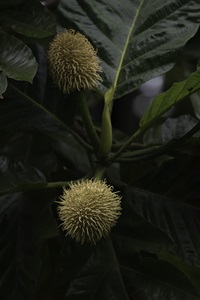
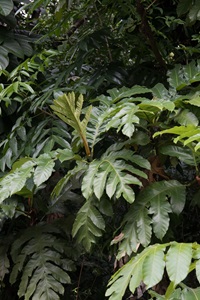

Left to right: Terap fruits on a branch, juvenile Terap leaves, and a close up look at the Terap fruit
The Terap (Artocarpus elasticus) is a native tree that can grow up to 45 m tall. It holds large leaves that are ornamental. Juvenile Terap trees have deeply lobed leaves, while mature trees develop entire leaves.
Its cream-yellow fruit has soft recurved spines. Each fruit contains white pulp that is edible with a sweet savory taste. These trees can be seen in Fort Canning Park and the Bukit Timah Nature Reserve.
Mentawa
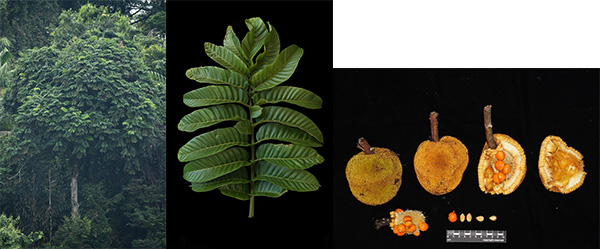
Left to right: The Mentawa in the Central Catchment Nature Reserve, and the leaf and fruits of the Mentawa (Photo credit: Reuben Lim)
It produces brownish yellow fruit that is in colour. The pulp is orange-red and sweet. It tastes somewhat like a pumpkin and in some Asian countries, the seeds are eaten roasted. Mature trees can be found along Lornie Trail in MacRitchie Reservoir Park and Fort Canning Park.
Monkey Jackfruit

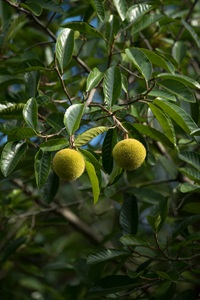
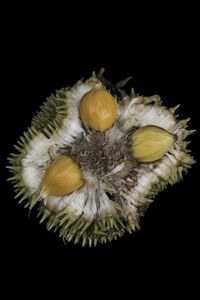
Left to right: The Monkey Jackfruit tree, fruiting Monkey Jackfruit on a branch, and the fruit
The Monkey Jackfruit (Artocarpus rigidus) grows up to 35 m tall. The tree produces medium-sized oval leaves and round spiny fruits which turn from green-yellow to orange when ripe. The fruit contains many seeds which are embedded in an orange waxy pulp.
There are several Monkey Jackfruit trees growing along Maranta Avenue in the Singapore Botanic Gardens as well as at the Saraca Stream near the Gardens’ Tanglin entrance.
Marang
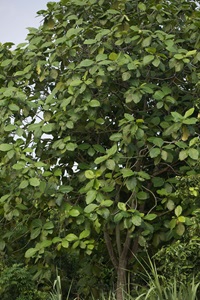
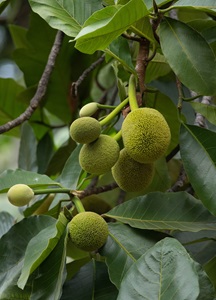
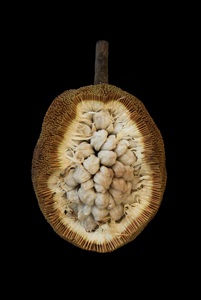
Left to right: The Marang tree, a fruiting branch and the Marang fruit showing its flesh
The Marang (Artocarpus odoratissimus) is native to Malaysia, Indonesia and the Philippines, but not to Singapore. However, it is widely cultivated here. You can find Marang trees at Fort Canning Park, Singapore Botanic Gardens and Bedok Town Park.
This species produces broad, hairy leaves and football-sized fruits. The fruits contain juicy, aromatic and sweet pulp that covers the seeds. The seeds can be eaten roasted or boiled and are said to have a nutty flavor.
Breadnut
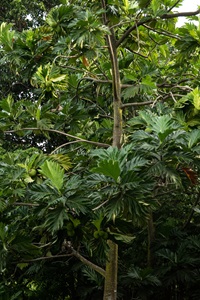
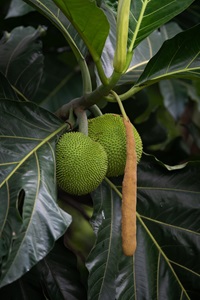
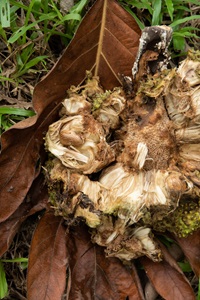
Left to right: The Breadnut tree, Breadnut fruits, an over-ripe Breadnut fruit showing its seeds
The Breadnut (Artocarpus camansi), also known as Kluwih, originates from Indonesia and Papua New Guinea. It is often mistaken as the Breadfruit tree (Artocarpus altilis) as it shares the same leaf shape and size.
Its leaves are rough to the touch and the fruits are large, fleshy and contain round seeds inside. Young fruits of this species are cooked and eaten as a curried vegetable. Mature trees can be found at Fort Canning Park opposite the Sang Nila Utama Garden.
Gardeners’ Day Out
Participate from the comfort of your home with online activities such as talks and demonstrations, video tutorials of activities and promotions offered. Enjoy Gardeners’ Day Out online at www.nparks.gov.sg/GDO.
You can also enjoy videos of our Gardening With Edibles Masterclass Series. They are conducted by NParks horticulturists, focusing on unique and challenging edibles across different plant families.
Learning More
If you are a gardening newbie, visit NParksSG, our refreshed YouTube Channel that serves as a one-stop repository for more than 500 video resources. It covers topics ranging from types of soil needed for your garden and how to plant, harvest and even cook your edibles.
For more information about the flora and fauna found in Singapore, please visit Flora and Fauna Web.
If you like what you read, follow us on Facebook, Instagram and Telegram to get the latest updates.
Text by Zaki Jamil
About the writer
Zaki Jamil is a horticulturist at Pasir Panjang Nursery, under the NParks Horticultural and Community Gardening Division. He grows a wide range of palms, from rare natives to exotics, and finds them charismatic plants to work with.


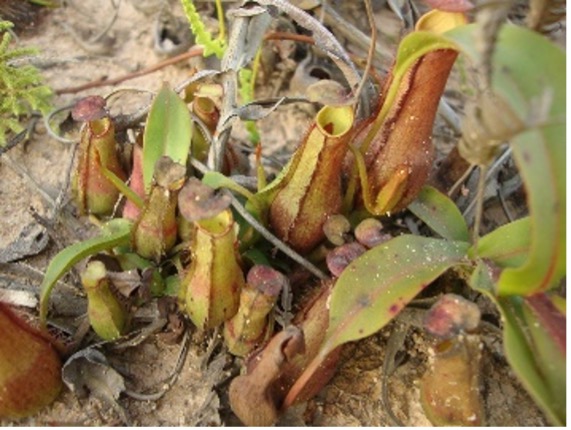


Have views or comments on this article? Let us know via this form. If you would like to give us feedback on any other areas relating to our parks and gardens, please submit via https://www.nparks.gov.sg/feedback